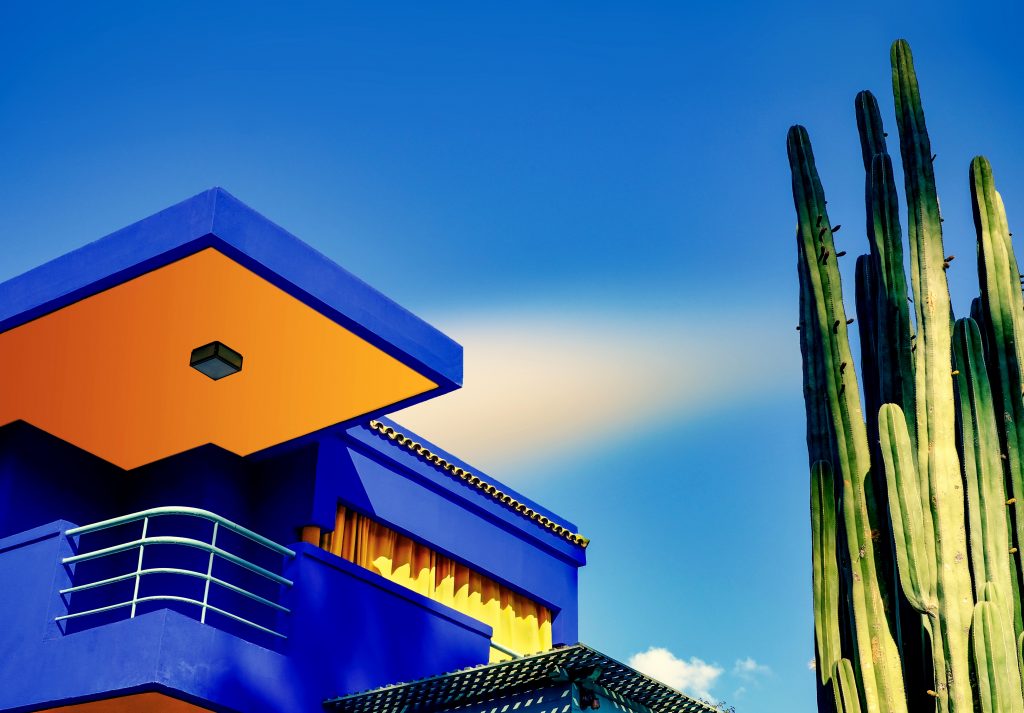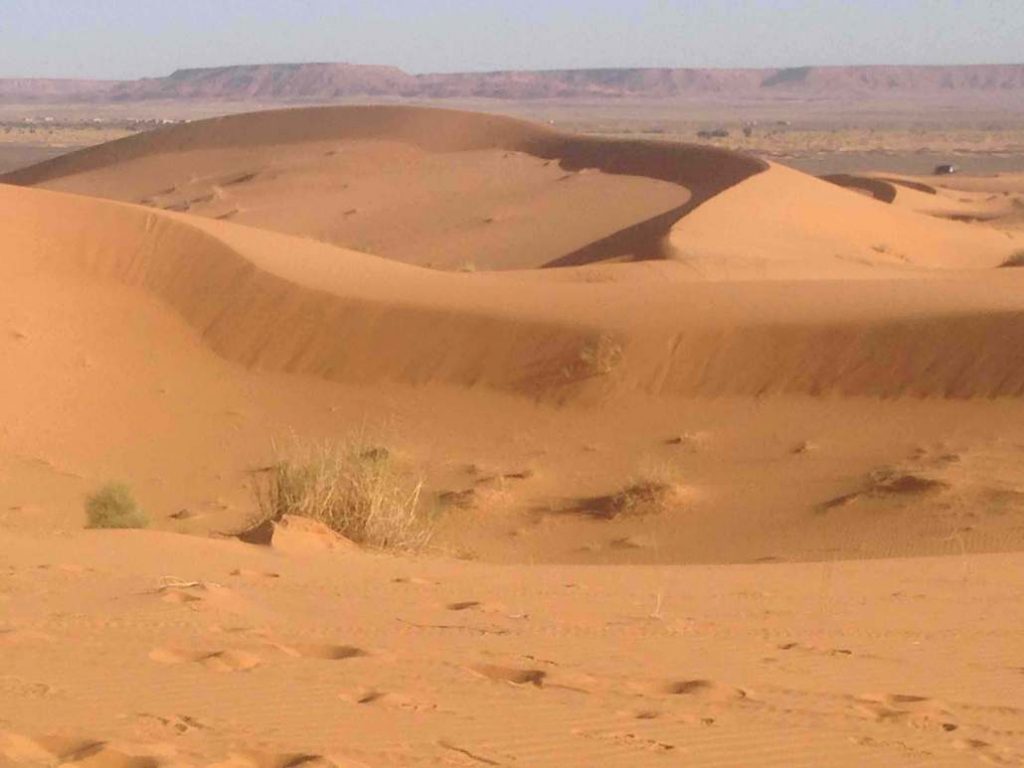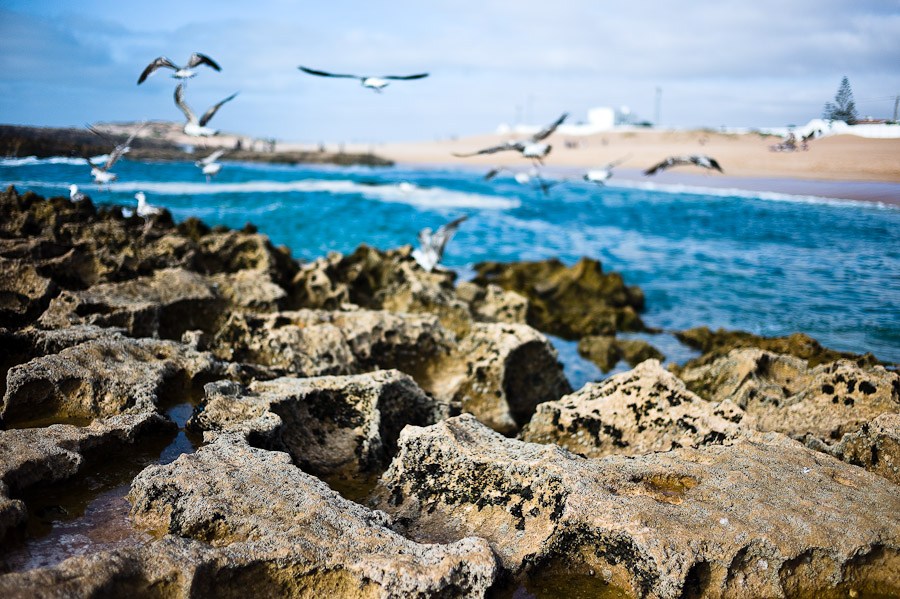The Best Time to Visit Morocco

Morocco is a land of diverse landscapes, majestic architecture, vibrant colours and heady spices. From the white-topped Atlas Mountains and the azure seas to the rich orange-gold hues and unpolluted starlit skies of the Sahara, the explosion of colours are reflected in the rich culture and heritage of this ancient and exotic land.
The diversity of the landscape however, lends itself to varying temperatures and climatic conditions, so if you’re planning a trip to Morocco, it’s wise to choose the right time of year so you can make the most of your trip.
Here’s a guide to the seasons, climate, festivals and most popular destinations to help you decide the best time of year to fully enjoy your Moroccan experience.
Seasons
Depending where you go, Morocco can be a land of extreme temperatures – from blisteringly hot days to freezing cold nights. The diversity of the landscape also means that the climate varies from region to region. The mildest climate can be found on the coast, which is moderate and sub-tropical. The further inland you go, the more extreme the temperatures become.
As a general guide, if you want to avoid the hottest and coldest times, spring and autumn are the best seasons to enjoy Morocco.
SPRING
In the spring you’ll find pleasant temperatures that aren’t too harsh, especially on the coast. Temperatures range from around 18 to 28 degrees, whereas the interior still reaches 35 degrees. Spring offers ideal hiking weather in the Atlas Mountains from around mid-March to May.
SUMMER
The Moroccan summer lasts from June to August. July is the hottest month and, with bearable temperatures and little humidity, it’s the time of year when many escape to the coast to avoid the stifling heat in the cities and the harsh sirocco winds coming off the Sahara
AUTUMN
With similar temperatures to spring, autumn is also a good time to visit as the heat of summer dies down and the cold winter nights have yet to set in.
At Essaouira on the coast, the Atlantic swell peaks in October, offering perfect surfing conditions. Autumn temperatures also make city sightseeing far more pleasant. The markets in Marrakech are far less hectic than in the summer so it’s a great time of year to fit in some early Christmas shopping. As the evenings start to get chilly, you’ll find a cosy, log fire in most Riads, where you can warm yourself, sip on mint tea and savour spicy and rich Moroccan dishes.
WINTER

The north coast has a Mediterranean climate and conditions tend to be cool and rainy in the winter months with an average daily temperature of around 12 degrees. Although the cities of Marrakech and Fez are comfortably warm during the day, night-time temperatures can plummet to around 5 to 7 degrees.
The winter is when the Sahara is at its most extreme: hot, dry days followed by freezing, bitterly cold nights. From November to February, the Atlas Mountains are blanketed in snow. Trekking boots are replaced with skis and snowboards, and snow trekking is available for experienced hikers.
Festivals
Festivals are an integral part of the country’s culture and provide a great opportunity for visitors to experience the ‘real’ Morocco.
When planning your trip, if possible, try and make the dates coincide with at least one of the many festivals held throughout the year to add an extra special touch to your holiday. Here are some of the most popular festivals worth attending.
INTERNATIONAL NOMAD FESTIVAL (MARCH)
This 4-day festival is a celebration of Saharan culture and heritage, which takes place in the desert near the village of M’hamid in the Draa Valley. You can enjoy a rich and varied programme of music, theatre, folk stories and ethnic art in specially constructed tents and in the open air. Highlights of the festival are camel racing and nomadic hockey.
ROSE FESTIVAL (MAY)
Roses are an integral part of the Moroccan culture, and the buds and petals can be used in various ways. Dried buds are used in cosmetics, home decorations and cooking, while distilled rose water and oil are key ingredients for many globally produced perfumes and serums.
Nestled in the Atlas Mountains is the Vallée des Roses. Each May over 700 tonnes of rose petals are harvested and, to celebrate, a 3-day festival is held. The event attracts over 20,000 visitors to the small town of El-Kelaâ M’Gouna every year. The highlight of the festival is a procession through a shower of rose petals and the annual crowning of the ‘Queen of Roses’.
You’ll also have the opportunity to feast on mouthwatering traditional Moroccan dishes while being entertained by local Berber music, songs and dances.
GNAOUA AND WORLD MUSIC FESTIVAL (MAY)
The annual festival is held at Essaouira where you can enjoy a range of free concerts featuring an eclectic mix of international music and traditional Moroccan Gnaoua music. Gnaoua music goes back thousands of years and is thought to create healing powers. Mystical Gnaoua masters use rhythmic, hypnotic music to evoke their ancestors to draw out ill-health and cure the afflicted.
Every year over 500,000 visitors, including worldwide jazz, pop and rock performers, come to the festival to learn from and perform with the great Gnaoua masters.
TANJAZZ FESTIVAL (MID-SEPTEMBER)
The world-famous Tangiers Jazz Festival runs over 4 evenings and features some of the best jazz artists in the world, performing in various hotels throughout the city. If you love jazz then this festival is a truly unmissable event.
Berber Migration
Berbers are ancient, North African tribes people and the nomadic population of Morocco. Twice a year the Berber tribes walk in the footsteps of their ancient ancestors and undertake a long journey, herding their goats, sheep and cattle between summer and winter pastures from the edge of the Sahara to the foothills of the Atlas Mountains. The bi-annual migration heads towards the mountains in May and back down again in September.
Visitors have the chance to accompany a traditional Berber family for part of the journey and experience the everyday life and culture of this fascinating tribe.
Geminids Meteor Shower
If you want a change from the traditional run up to Christmas, then head to Morocco instead to witness the Geminids Meteor Shower spectacle from the Sahara desert. The clear and unpolluted Saharan skies guarantee a breathtaking cosmic display and a once-in-a-lifetime experience you’ll never forget. The meteor shower is at its most intense in mid-December, so why not finish your trip with some last-minute Christmas shopping at the markets of Marrakech? Be aware though, night temperatures in the Sahara at this time of year are bitterly cold, so make sure you wrap up warm.
Sahara

Spanning 50 km from north to south and with wind-blown sand dunes reaching up to 150 metres high, the endless views of the golden-orange sands of the Sahara desert are just as they appear in the movies.
Camel trekking and camping out under the stars is the best way to experience the Sahara. For a short trip, Erg Chebbi is easily accessible from Marrakech. Alternatively, for those with a true spirit of adventure, head to Erg Chigaga where you’ll find the largest, wildest and least visited dunes of the Sahara. However, Erg Chigaga is not for the faint-hearted. It involves a good 2-day camel ride from the nearest village and your only accommodation choice is an elaborately decorated tent camp in the Saharan wilderness.
Daytime heat is most bearable in April and October, whereas night temperatures in December and January can reach below freezing. Whatever time of year you plan your trip, ensure you pack suitable clothing.
Atlas Mountains
The magnificent Atlas Mountains offer a range of activities throughout the seasons: from hiking in the spring, summer and autumn, to skiing and snowboarding in the winter.
In the spring and early summer, a 5-hour trek will take you through the mountains, from Marrakech to the walled city of Taroudant. You’ll pass traditional Berber villages, kashbahs (a type of ancient fortress where local leaders lived) and some of the most spectacular scenery in Morocco.
The Tizi n’Tichka Pass is the highest and most impressively paved pass in Morocco, linking Marrakech with Quarzate. The landscape varies from lush green foothills to stark, rocky outcrops before reaching the edge of the vast Saharan landscape. Along the way be sure to visit Kasbah Aït Benhadou, the most celebrated Kasbah in Morocco that featured in Lawrence of Arabia and Gladiator.
Snow and Morocco may seem an unlikely coupling, yet the Oukaimeden ski resort is easily accessible from Marrakech and offers skiing, snowboarding and sledging activities for all levels. You may not find it up to European standards, but the fact that you can say, ‘I’ve skied in Africa’ definitely makes the resort worth a visit. The skiing season lasts from early January to mid-March.
Beaches
Two of the most frequented coastal towns in Morocco are Essaouira and Agadir. The cooler ocean breezes make them popular destinations with native Moroccans trying to escape the summer heat. July and August coincide with European school holidays. It’s the peak tourist season, so early booking is essential.
If you’re not restricted by school holidays, late spring and early autumn provide pleasantly warm weather so you can top up your tan without the crowds.
ESSAOUIRA

Essaouira has a long sandy beach and a good choice of pavement cafés and restaurants for alfresco dining. The laid back atmosphere provides the perfect spot to relax. Windsurfing here is also popular. When you’ve had enough of the beach, the old town is delightful and small enough to explore on foot.
AGADIR
This modern city features palm-adorned promenades, an immense sandy beach and premier hotels and resorts. The beach is pleasantly sheltered from ocean winds and is well patrolled, clean and safe. However, the ocean undercurrent is sneakily strong, so it’s best for children and weak swimmers to rely on hotel pools for swimming.
The markets, fishing port and impressive new marina are also worth a visit.
Cities
MARRAKECH
To fully appreciate this buzzing and vibrant city, visit the main square in the evening where you can soak up the atmosphere and drink in the intoxicating aromas of exotic spices from the food vendors and various Moroccan street food stalls that line the square. It’s also the perfect place to buy quality leather goods, handcrafted objects, decorative homeware and jewellery. Just don’t forget to barter – the stallholders expect it and it’s all part of the experience.
Marrakech is stiflingly hot and cloying at the height of summer, so if you want to avoid the heat, go in spring or autumn when the markets will be less crowded without losing its vibrant buzz.
Fez
Founded in the 9th Century, Fez is the largest and oldest medieval city in the world. The jewel of this imperial city is the ancient medina, which provides a delightful and fascinating escape from the modern world where donkeys are still used for transporting goods. Filled with narrow, winding streets, the colour-coded routes are theme-related and will take you on a discovery of palaces, gardens, markets and mosques.
Another site worth a visit, although non-Muslims are not permitted to go inside, is the Kairaouine Mosque, site of the largest mosque in Africa and the oldest university in the world.
Ramadan
The sacred period of Ramadan takes place for 30 days from early June to early July. During this time, Muslims fast and pray from dawn to dusk. Expect to find museums closed, services affected and most cafés, bars and restaurants closed during daylight hours. As night descends and fasting comes to an end for the day, the city streets are filled with revellers, feasting long into the night. You’ll find many eateries stay open longer during this time. However, if you’re concerned that Ramadan could affect your trip, then avoid booking your holiday over June.
If you’d like to find out more about the seasons in Morocco, or you’re ready to book a trip now, contact Epic Travel or send an email to info@epic.travel